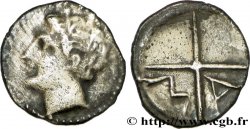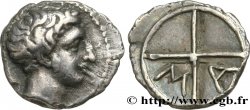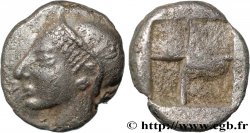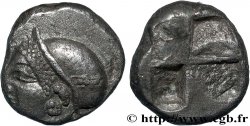v32_0802 - MASSALIA - MARSEILLE Hémiobole du trésor d'Auriol au protomé de sanglier ailé à gauche
MONNAIES 32 (2007)
Starting price : 600.00 €
Estimate : 1 000.00 €
Realised price : 600.00 €
Starting price : 600.00 €
Estimate : 1 000.00 €
Realised price : 600.00 €
Type : Hémiobole du trésor d'Auriol au protomé de sanglier ailé à gauche
Date: 490-470 AC
Mint name / Town : Marseille (13)
Metal : silver
Diameter : 7 mm
Orientation dies : 12 h.
Weight : 0,52 g.
Rarity : R2
Coments on the condition:
Exemplaire de qualité exceptionnelle, bien centré et complet des deux côtés, bien que sur un flan très allongé. Métal très légèrement granuleux avec une patine grise
Catalogue references :
Obverse
Obverse legend : ANÉPIGRAPHE.
Obverse description : Protomé de sanglier ailé à gauche.
Reverse
Reverse legend : ANÉPIGRAPHE.
Reverse description : Carré creux.
Commentary
Cet exemplaire de ce groupe W est particulièrement beau ; peut-être l'un des plus beaux connus. Le droit dégénère vite et celui-ci est très proche du W26, sans que la liaison de coin soit certaine. Notre revers est très reconnaissable, avec des motifs géométriques bien nets ; il a été frappé avec le même coin que les monnaies W26, W27 et W30, respectivement conservées à Paris, Lyon et Marseille.








 Report a mistake
Report a mistake Print the page
Print the page Share my selection
Share my selection Ask a question
Ask a question Consign / sell
Consign / sell
 Full data
Full data









